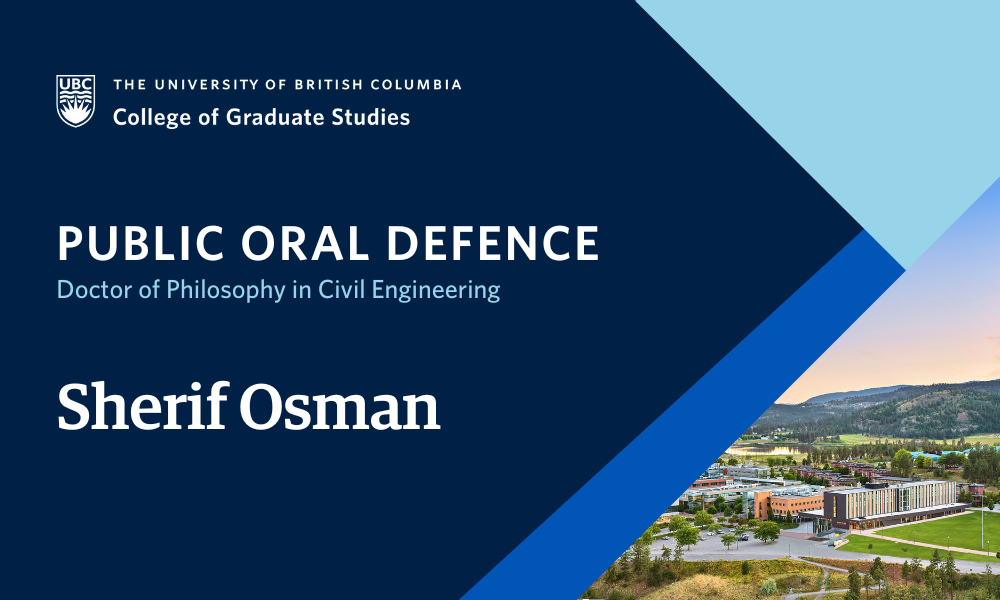
- This event has passed.
Dissertation Defence: Seismic Performance Assessment of Reinforced Concrete Bridge Piers Utilizing Hybrid Glass Fiber Reinforced Polymer-Steel Reinforcement
February 26 at 11:00 am - 3:00 pm

Sherif Osman, supervised by Dr. Shahria Alam, will defend their dissertation titled “Seismic Performance Assessment of Reinforced Concrete Bridge Piers Utilizing Hybrid Glass Fiber Reinforced Polymer-Steel Reinforcement” in partial fulfillment of the requirements for the degree of Doctor of Philosophy in Civil Engineering.
An abstract for Sherif Osman’s dissertation is included below.
Examinations are open to all members of the campus community as well as the general public. This examination will be offered in hybrid format. Registration is not required to attend in person. Please email shahria.alam@ubc.ca to receive the Zoom link for this defence.
ABSTRACT
In earthquake-prone areas, bridges require significant transverse reinforcement to prevent buckling. This study explored double-confined (DC) Reinforced Concrete (RC) bridge piers with new reinforcement designs, including large-scale double-confined steel (DCS) and double-confined hybrid (DCH) columns, using a blend of Glass Fiber-Reinforced Polymer (GFRP) and steel. The innovative design consists of longitudinal rebars in two layers: an external GFRP cage and an internal steel cage, each transversely reinforced with their respective materials. This approach merges GFRP’s corrosion resistance with steel’s ductility, offering a novel solution for seismic regions. Comprehensive testing of standard, DCS, and DCH piers under cyclic loading revealed differences in load-bearing capacities, types of damage, and ductility. DCS piers exhibited superior ductility, while GFRP enhanced corrosion resistance without sacrificing stiffness. The study then focused on repair methods for damaged bridge piers post-seismic events, assessing the effectiveness of various repair strategies.
The study assessed the repair of damaged bridge piers, comparing As-built and Repaired Control and DCH piers, focusing on FRP wraps and other repair techniques. It included retesting procedures and results, highlighting the repairs’ effectiveness in improving the piers’ structural integrity. Notably, repaired specimens, particularly Control-Repaired and Spc2-DCH-Repaired, showed enhanced performance in handling higher loads and dissipating more energy in later testing stages, demonstrating improved resilience and energy dissipation after repair. The study progressed to using Performance-Based Design (PBD) procedures for bridge columns, specifically analyzing and comparing the seismic performance and PBD damage states of DCS, DCH, and conventional bridge piers. This transition highlights the study’s comprehensive approach, encompassing both post-damage repair effectiveness and preemptive design strategies for enhanced seismic resilience.
This study applied PBD to bridge columns, comparing seismic performance and damage states of DCS, DCH, and conventional piers. DCS and DCH showed potential as RC column substitutes. A fiber-based model predicted pier responses under cyclic loads, and moment-curvature analyses produced design charts for stiffness and load ratios, aiding bridge pier design. Factorial analysis identified key parameters affecting drift ratios and strengths, leading to machine learning-derived mathematical expressions for load-deformation prediction. A comprehensive PBD design example highlighted the study’s practical relevance.